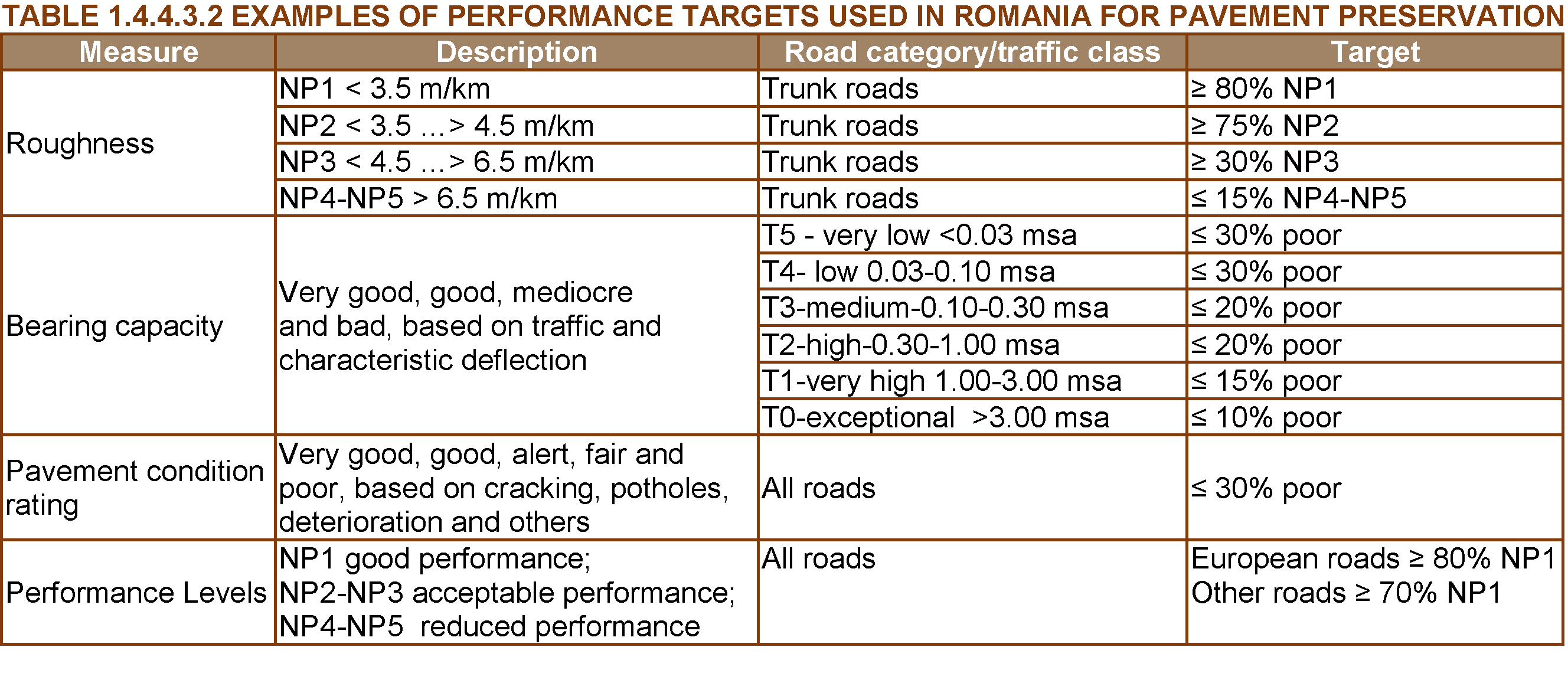
Asset Management Manual
A guide for practitioners!

Asset Management Manual
A guide for practitioners!
Progress in achieving asset management goals and objectives, as described by levels of service, is quantified by target values of the selected performance measures. Therefore, each performance measure should have a performance target associated with it over a period of time, typically up to five years.
The targets should be easily recognizable and understood by senior decision makers and/or the asset manager depending on whether they are strategic, tactical or operational.
The process of defining performance targets needs to be iterative, determining the best combination of targets against what is affordable. In this process, consideration should be given to:
Definition of targets
Performance targets define quantitatively the performance that needs to be achieved in order to reach the required levels of service. They should be set by staff responsible for asset management, agreed with senior decision makers and be achievable and affordable.
The process of setting performance targets may include steps such as the following (NCHRP, 2006):
Examples of performance targets as defined by various US state DOTs are presented in Table 1.4.4.3.1 Table 1.4.4.3.2 shows examples of targets used in Romania. Both sets of examples refer to pavement preservation.


NOTES:
NP1 – very good performance;
NP2 – good performance;
NP3 – medium performance
NP4 - NP5 - poor performance
Traffic expressed in millions of standard axles (msa)